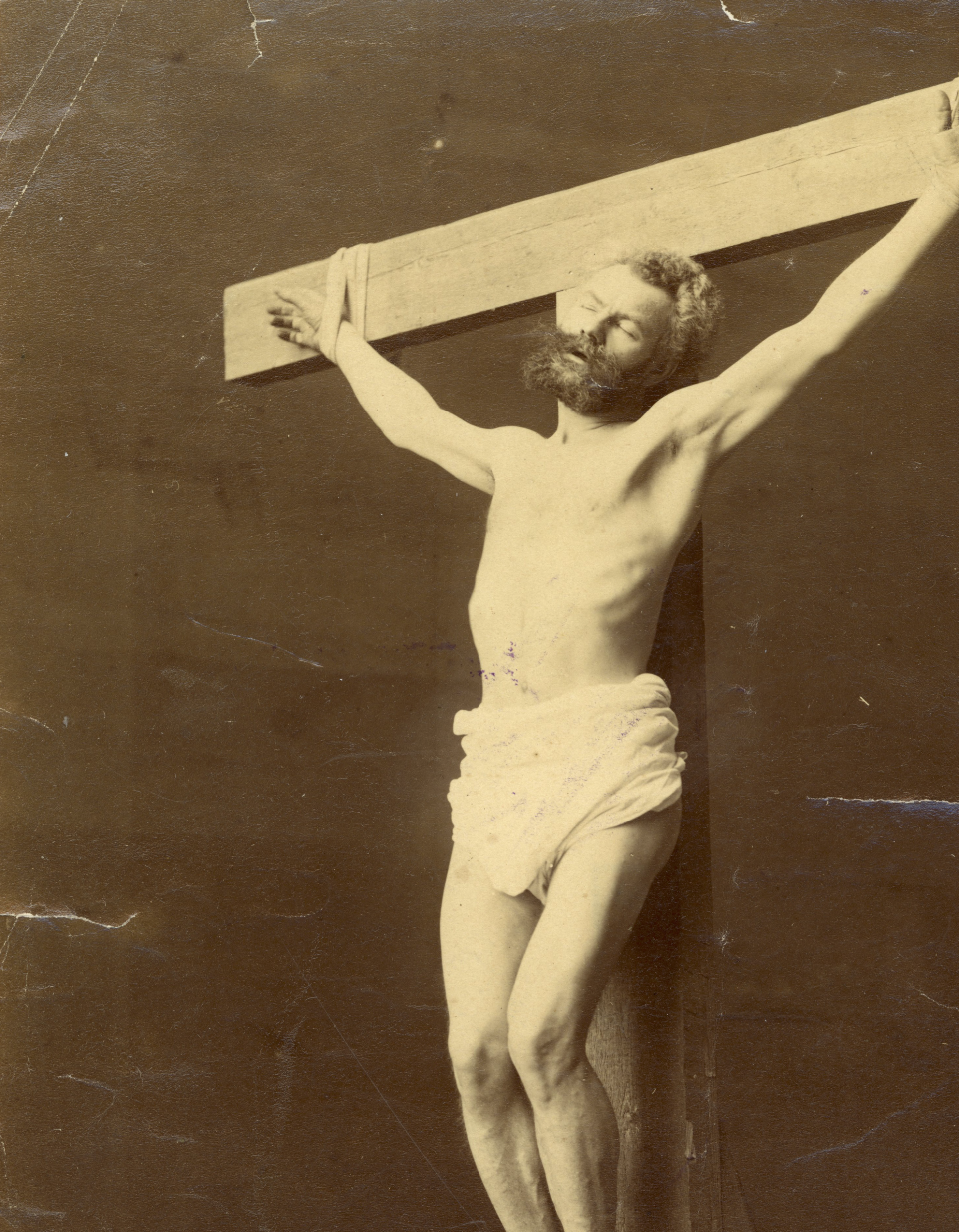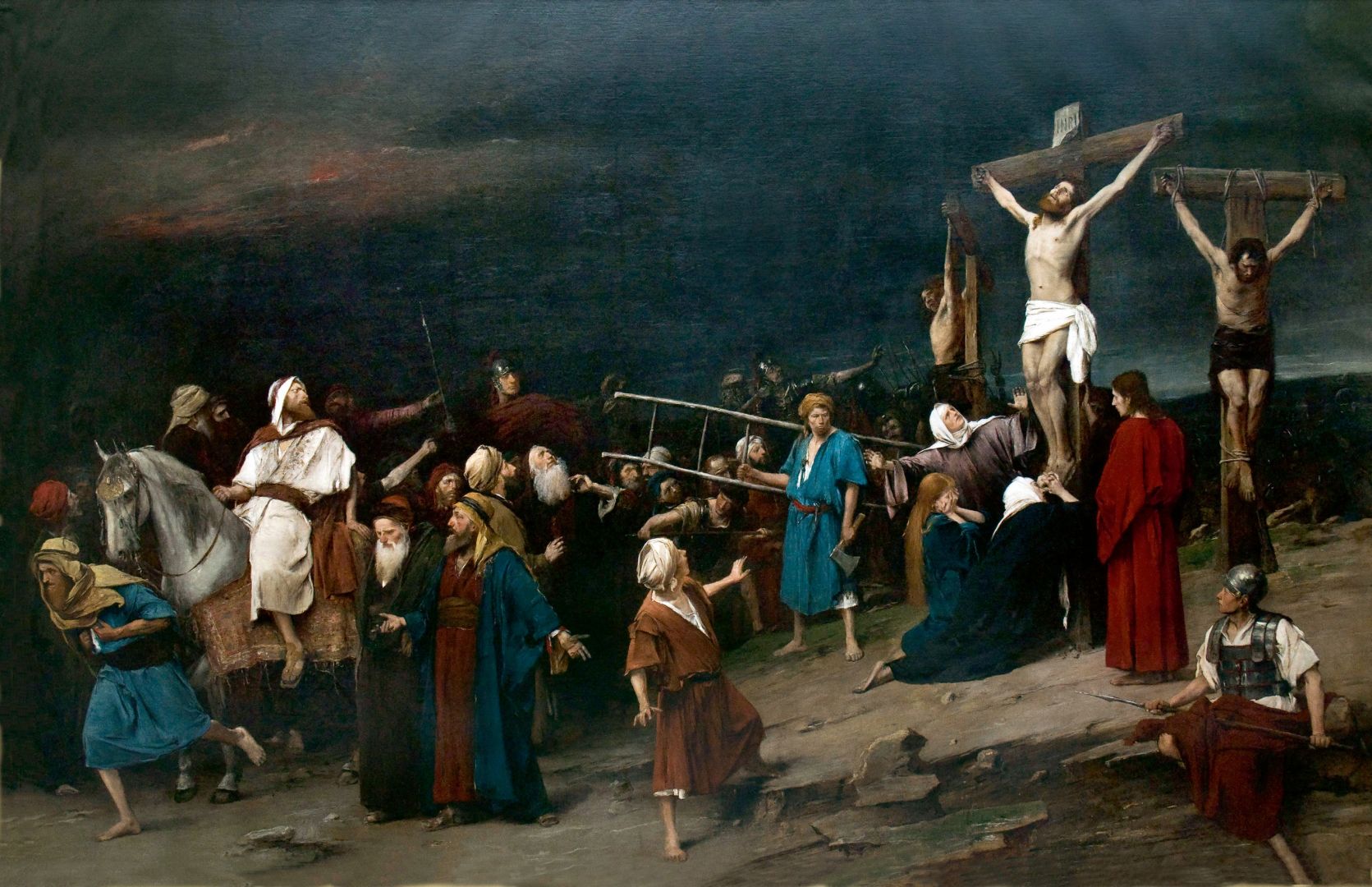The "Colossal" Paintings and World Renown - 3
GOLGOTHA
MUNKÁCSY Mihály
(1844–1900)
GOLGOTHA
1884
Oil on canvas
Déri Museum, Debrecen
In 1881, while Christ before Pilate was still being exhibited, Munkácsy began work on its thematic continuation, producing countless sketches and studies for the painting Golgotha.
One famous preparatory photograph shows Munkácsy himself tied to the cross, after the model he was using for Christ fell from the scaffolding and injured himself. Golgotha presents the final episode in the story of the Passion. At the foot of the Cross are Saint John the Evangelist and the three Marys - including a red-haired Mary Magdalene, her face buried in her hands as she weeps. Munkácsy's mastery of character depiction is in evidence here, too, in his rendering of the individual figures' emotions and reactions. The white-robed man on horseback is, according to the Book of Revelation, a reference to the risen Saviour. The background landscape reinforces the drama of the composition: the mass of dark clouds looming above the figures, suffused with a glimmer of blood-red light, intensifies the emotional impact of the work.
Sedelmeyer showed the painting at his own mansion at Easter in 1884, together with Christ before Pilate. The exhibition was a huge success. The popular nineteenth-century French writer Guy de Maupassant even referred to the sensational event, which took Paris by storm, in his novel Bel-Ami. According to Viennese critic and Rembrandt expert Alfred von Wurzbach:
"... Golgotha ... is the most extraordinary work of art since Rembrandt's Night Watch, and in 222 years there has been no other painting that compares to either, with the possible exception of Munkácsy's Christ before Pilate."
Golgotha was seen by around a hundred thousand visitors in Budapest and by almost a million in Great Britain, while tens of thousands of people purchased copperplate engravings of it. In 1887, following its European tour and the American tour of both paintings, Christ before Pilate and Golgotha were purchased by American millionaire businessman John Wanamaker, for a sum that made Munkácsy the most expensive living painter. The Wanamaker family owned the paintings for almost a hundred years. Golgotha has been on display in Hungary in the Déri Museum in Debrecen since 1993, and in 2019 became the property of the Hungarian state.

